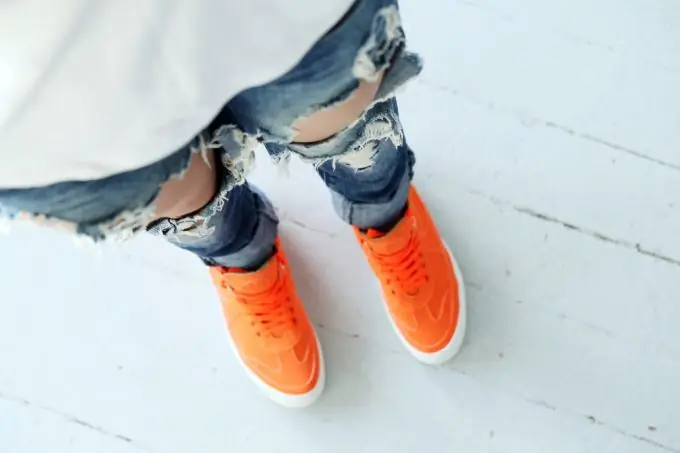Fashion is cyclical, and ripped jeans have again become a desirable item in the wardrobe of advanced fashionistas and fashionistas. If you have a desire to follow this trend, and your old pants are in a deplorable state, it is worth giving your jeans a second life, turning them into a luxurious bohemian outfit.

You can make trendy ripped jeans out of worn-out pants yourself. It is enough to choose a model suitable for experiments and arm yourself with step-by-step instructions that describe the whole process in detail.
What is required for work
To rip jeans in full accordance with the latest fashion trends, in addition to old pants, you must have on hand:
- a sharp stationery knife;
- a small pad that can be inserted into the leg, for example, a rectangular piece of plywood, plastic, thick cardboard;
- tailor's chalk or a small sharpened bar of soap;
- scissors;
- a long, thick needle and a regular sewing needle.
When all the tools and devices are prepared, you can start implementing the idea.
Preparatory stage
First, you need to lay out the washed jeans on the table and carefully examine them. The purpose of the inspection is to detect all gaps, severe abrasions, and unwashed stains, if any. Carefully circle all discovered problem areas with tailor's chalk: it is probably in these places that man-made holes should be made.
Before you mark the cuts, consider how they will go and how long they will be. Do not forget that in places where the fabric is most stretched, the cuts will open and tear, and where the fabric of jeans sags, they will narrow.
Remember not to place the cuts too close together. Well-worn and deliberately aged fabric does not differ in strength, and your creative cuts run the risk of turning into ugly holes very quickly. Don't plan too many cuts, or there will be more holes than the pants themselves. Label jeans, then put on your pants and critically evaluate the result. If all requirements are met, holes can be cut.
Manufacturing process
Now proceed to the most important part of the work: place the gasket under the incision and carefully draw along the marked line with a sharp knife.
Make sure and precise movements with the knife so that the fabric of the jeans comes apart in one pass. Otherwise, the cut will be crooked, and it will be inconvenient to work with its edges.
After the cut is made, you need to take care of its framing. Unfold the fabric around the edges by pulling out a few cross threads. Then, using a thick needle, release a dozen longitudinal threads and cut them in half - you get a pretty fringe. If it seems too long or sloppy to you, trim the excess with scissors. Repeat this procedure until all incisions have been processed. The area around the cuts can be additionally rubbed with a pumice stone or fine grater to make them look more worn.
Then reinforce the edges of the incisions. To do this, pull a few long strands out of the jeans, thread them into the needle, and hand stitches along the edges of the cut. This will reduce the stress on the fabric and prevent it from tearing.






